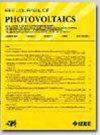光伏电站航空热像仪自动检测数据质量分析
IF 2.6
3区 工程技术
Q3 ENERGY & FUELS
引用次数: 0
摘要
随着光伏电站装机容量持续呈指数级增长,具有成本效益的运行和维护策略变得越来越重要。航空红外热成像技术能够在公用事业规模的光伏电站中实现快速、稳健的故障检测。本文探讨了提高检测效率的两种关键途径:提高飞行高度和部署无人机群。较大的成像距离扩大了视野,但降低了故障检测能力和地理参考精度。在这项工作中,我们研究了自动故障检测和定位的检测效率和数据质量之间的权衡。训练YOLO11机器学习模型检测热图像中的缺陷,并在不同成像距离和摄像机俯仰角下评估其性能。故障检测的鲁棒性可达约80 m,但地理参考误差成为主要限制因素。最后,我们对光伏电站进行了基于无人机群的巡检,集成了自动故障检测和定位,并将结果与地面真实数据进行了比较。本文章由计算机程序翻译,如有差异,请以英文原文为准。
Data Quality Analyses for Automatic Aerial Thermography Inspection of PV Power Plants
As the installed capacity of photovoltaic power plants continues its near exponential growth, cost-efficient operation and maintenance strategies become increasingly crucial. Aerial infrared thermography has enabled fast and robust fault detection in utility-scale PV plants. In this article, we explore two key approaches to improve inspection efficiency: increase the flight altitude and deploy swarms of unmanned aerial vehicles. A larger imaging distance expands the field of view but reduces fault detectability and georeferencing accuracy. In this work, we study the tradeoff between inspection efficiency and data quality for automatic fault detection and localization. The YOLO11 machine learning model was trained to detect defects in thermal images, and its performance was evaluated to vary imaging distances and camera pitch angles. Fault detection remained robust up to approximately 80 m, but georeferencing error became the primary limiting factor. Finally, we conduct a UAV swarm-based inspection of a PV plant, integrating automatic fault detection and localization, and compare the results with ground truth data.
求助全文
通过发布文献求助,成功后即可免费获取论文全文。
去求助
来源期刊

IEEE Journal of Photovoltaics
ENERGY & FUELS-MATERIALS SCIENCE, MULTIDISCIPLINARY
CiteScore
7.00
自引率
10.00%
发文量
206
期刊介绍:
The IEEE Journal of Photovoltaics is a peer-reviewed, archival publication reporting original and significant research results that advance the field of photovoltaics (PV). The PV field is diverse in its science base ranging from semiconductor and PV device physics to optics and the materials sciences. The journal publishes articles that connect this science base to PV science and technology. The intent is to publish original research results that are of primary interest to the photovoltaic specialist. The scope of the IEEE J. Photovoltaics incorporates: fundamentals and new concepts of PV conversion, including those based on nanostructured materials, low-dimensional physics, multiple charge generation, up/down converters, thermophotovoltaics, hot-carrier effects, plasmonics, metamorphic materials, luminescent concentrators, and rectennas; Si-based PV, including new cell designs, crystalline and non-crystalline Si, passivation, characterization and Si crystal growth; polycrystalline, amorphous and crystalline thin-film solar cell materials, including PV structures and solar cells based on II-VI, chalcopyrite, Si and other thin film absorbers; III-V PV materials, heterostructures, multijunction devices and concentrator PV; optics for light trapping, reflection control and concentration; organic PV including polymer, hybrid and dye sensitized solar cells; space PV including cell materials and PV devices, defects and reliability, environmental effects and protective materials; PV modeling and characterization methods; and other aspects of PV, including modules, power conditioning, inverters, balance-of-systems components, monitoring, analyses and simulations, and supporting PV module standards and measurements. Tutorial and review papers on these subjects are also published and occasionally special issues are published to treat particular areas in more depth and breadth.
 求助内容:
求助内容: 应助结果提醒方式:
应助结果提醒方式:


